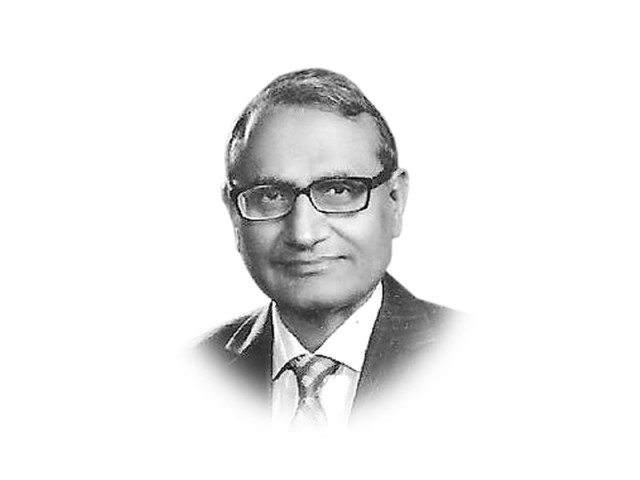Perverse structural change
Whatever growth that has taken place in the past four years has been contributed entirely by consumption.

pervez.tahir@tribune.com.pk
In 1998-99, the share of services in GDP was less than half of GDP at 48.95 per cent. By the last fiscal year of General (retd) Pervez Musharraf, in 2007-08, the share became 52.90 per cent, a jump of 3.95 percentage points. During the same interval, the share of agriculture declined by 4.10 percentage points. The difference between the two, 0.15 percentage points, was the increase in the share of the industrial sector. Some of the highest growth rates were experienced in three components of the services sector — wholesale and retail trade, finance and insurance and other services including ITC. Overall, the rate of growth of services during the Musharraf period at 5.52 per cent per annum was higher than the growth of 4.57 per cent in the commodity producing sector comprising agriculture and industry. The resulting increase in the services share was almost entirely at the expense of agriculture; the share of industry remained nearly the same. Corresponding to the higher growth and share of the services sector was the boom in consumption fed by easy availability of bank credit for automobiles and consumer durables. Between 2003-04 and 2007-08, the five high growing years of Musharraf, the average annual growth of GDP at market prices was 6.6 per cent. As growth in this period was fed by consumption and led by services, it was in the nature of a bubble bequeathed to the elected government in 2008-09, when it finally burst. GDP growth fell to 1.72 per cent, the lowest in 12 years. Historically, the process of development entails a gradual increase in the share of industry and a decline in the share of agriculture. Services dominate post-industrial societies. The case of Pakistan is an exception rather than the rule.
Under the elected government, the ascent of the services sector has continued. The share of services in GDP in 2011-12 is 0.6 percentage point above the share in the last year of Musharraf’s rule. An important difference is that the services sector has gained more at the expense of industry than agriculture. This is a reflection of the significant decline in the share of the sub-sector of large-scale manufacturing from 13.4 to 11.9 per cent. Normally the most dynamic contributor to growth, its average annual growth in the past four years was negative due to private investment taking a nosedive from Rs 272 billion in 2008-09 to Rs 177 billion in 2011-12.
Whatever growth that has taken place in the past four years has been contributed entirely by consumption. Among the principal sources is the high rural demand resulting from rising agricultural support prices and the urban demand for imports. The contribution of investment has been negative throughout. The heavy share of services in supply and consumption in demand makes Pakistan a case of perverse structural change.
Published in The Express Tribune, December 28th, 2012.














COMMENTS
Comments are moderated and generally will be posted if they are on-topic and not abusive.
For more information, please see our Comments FAQ